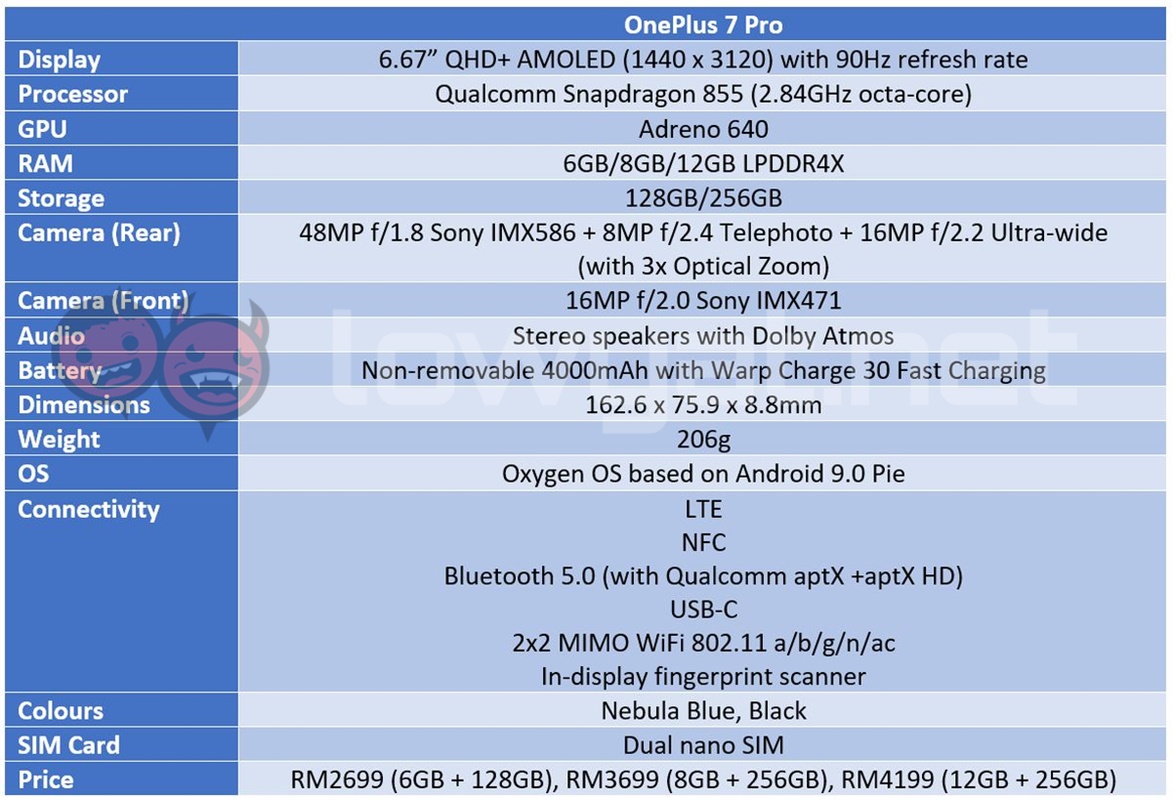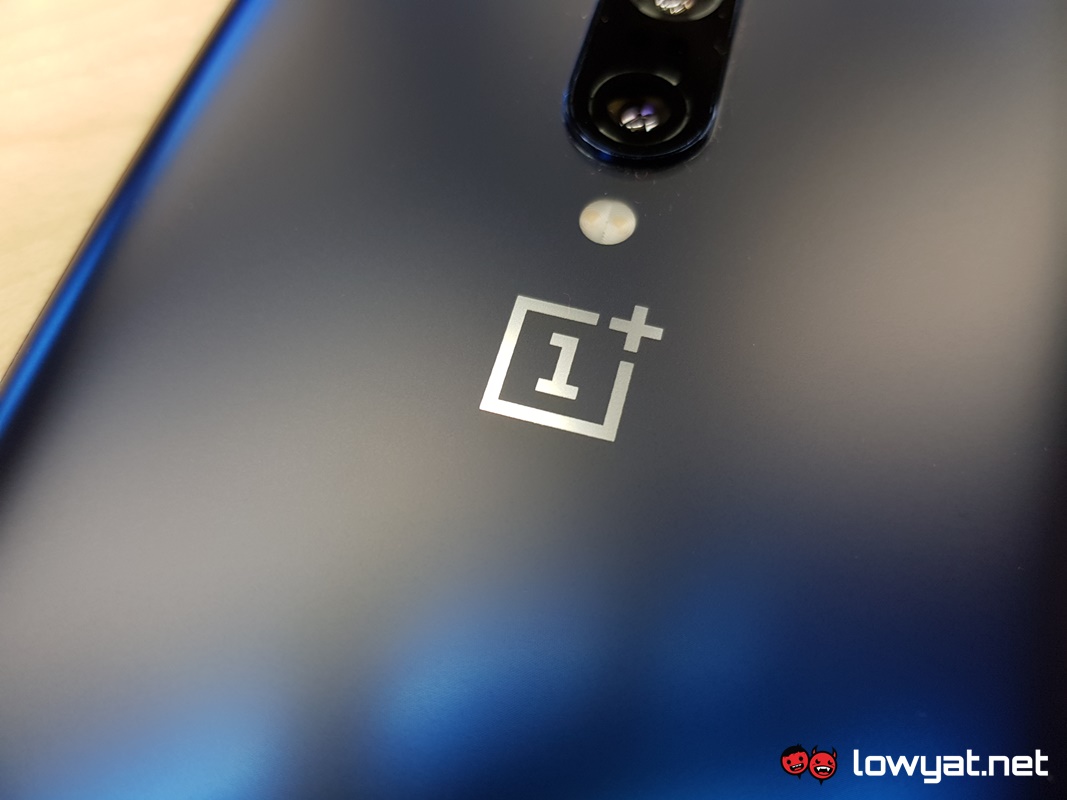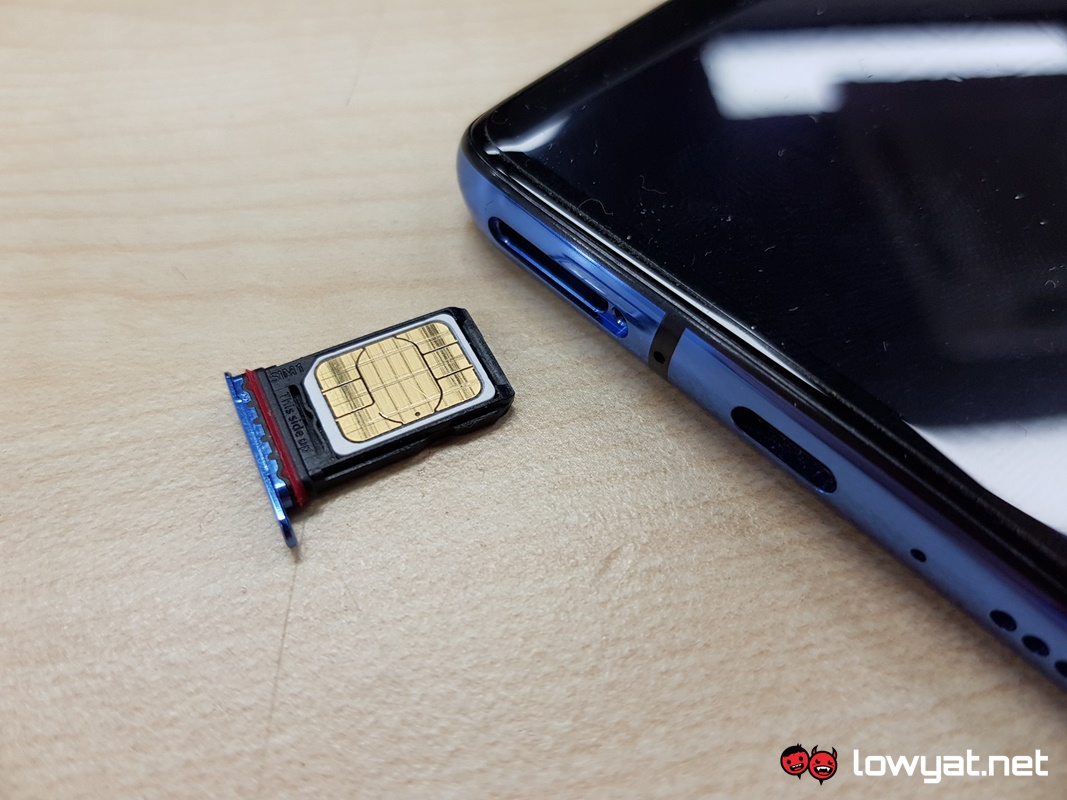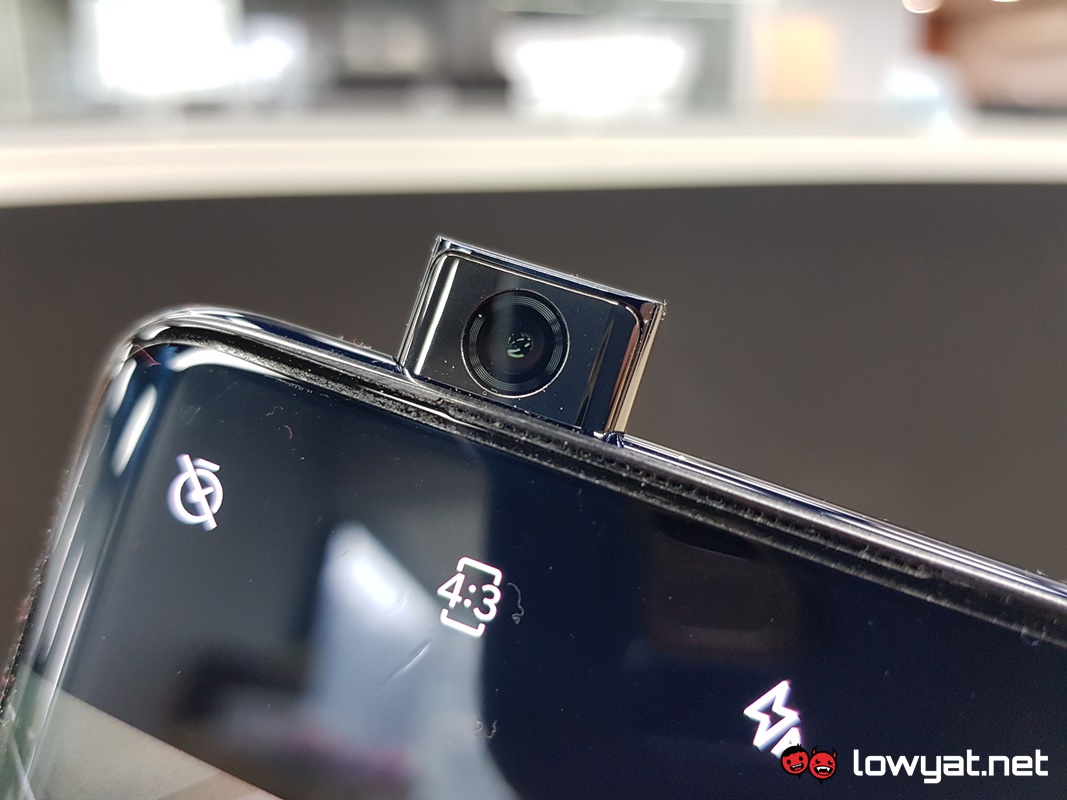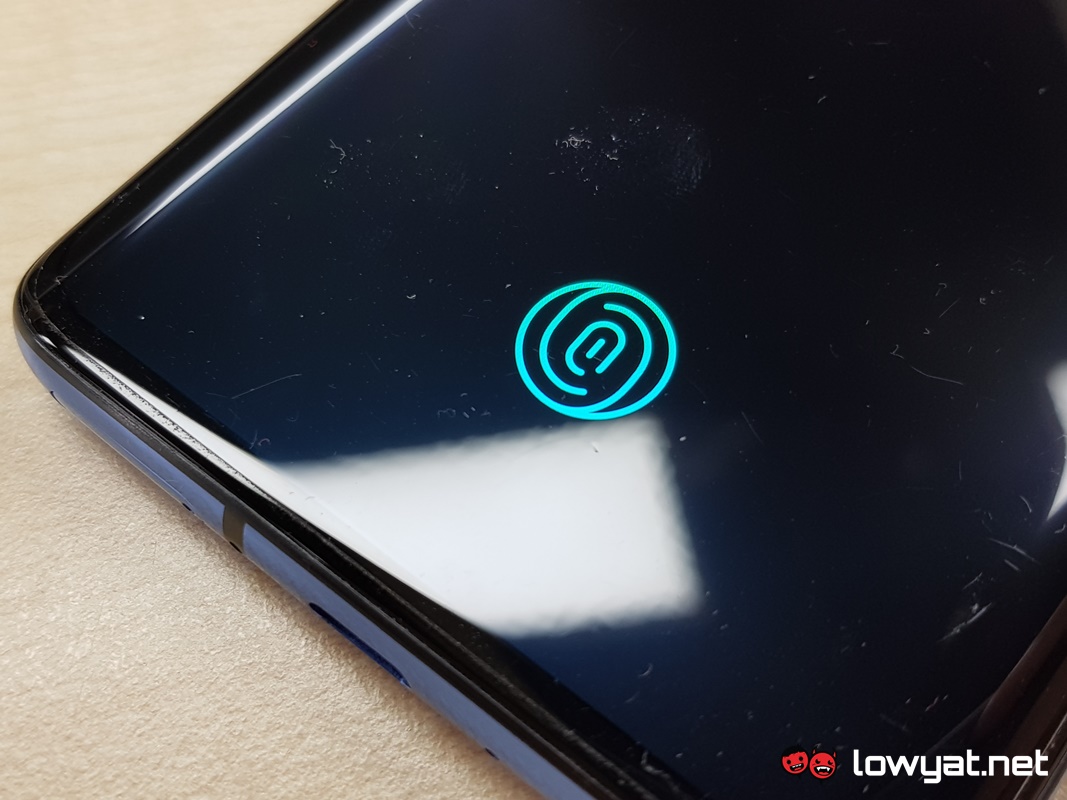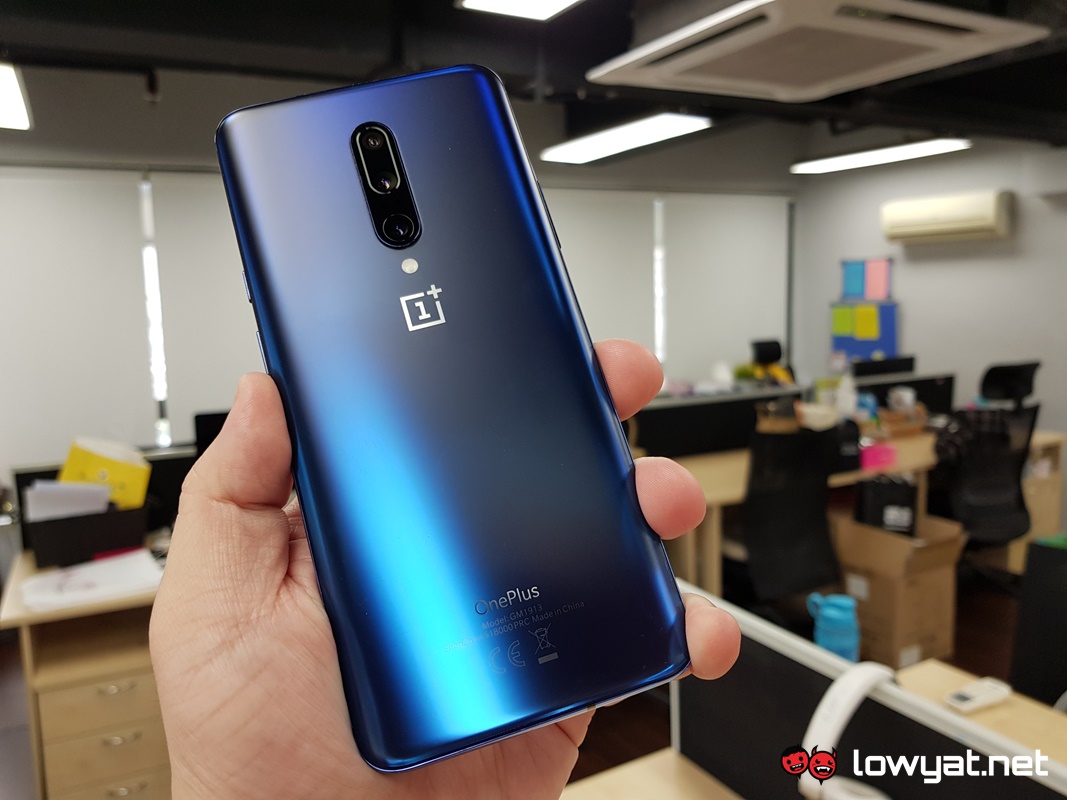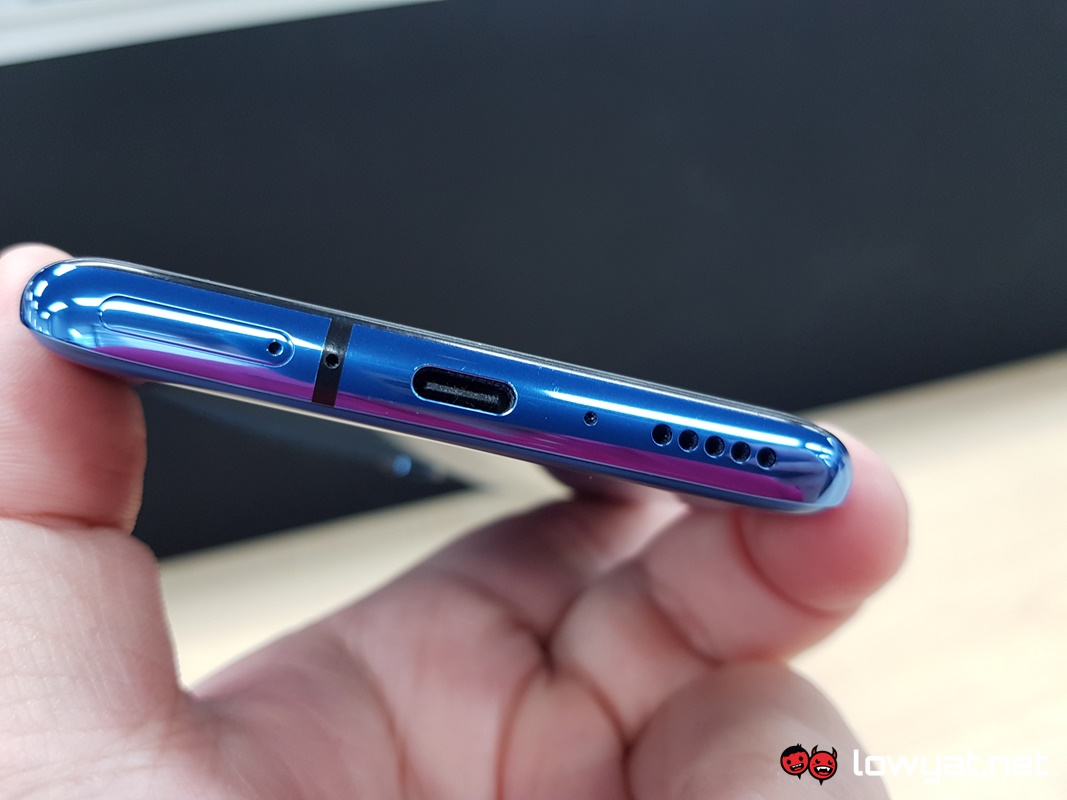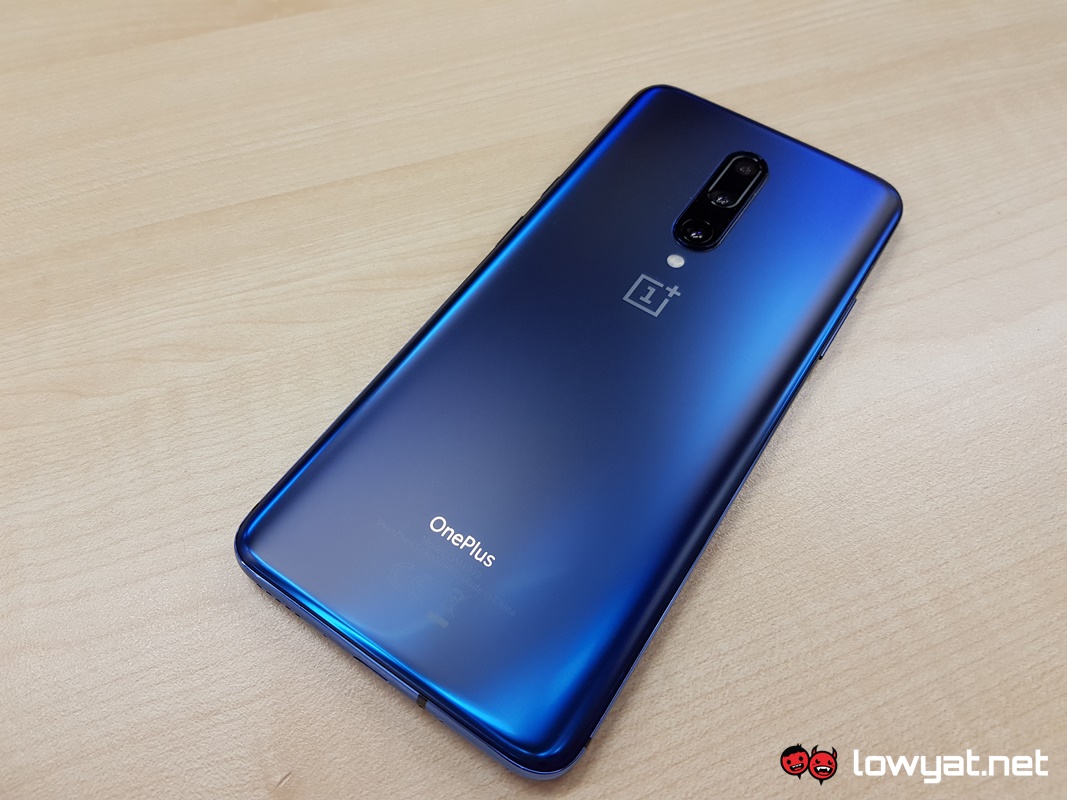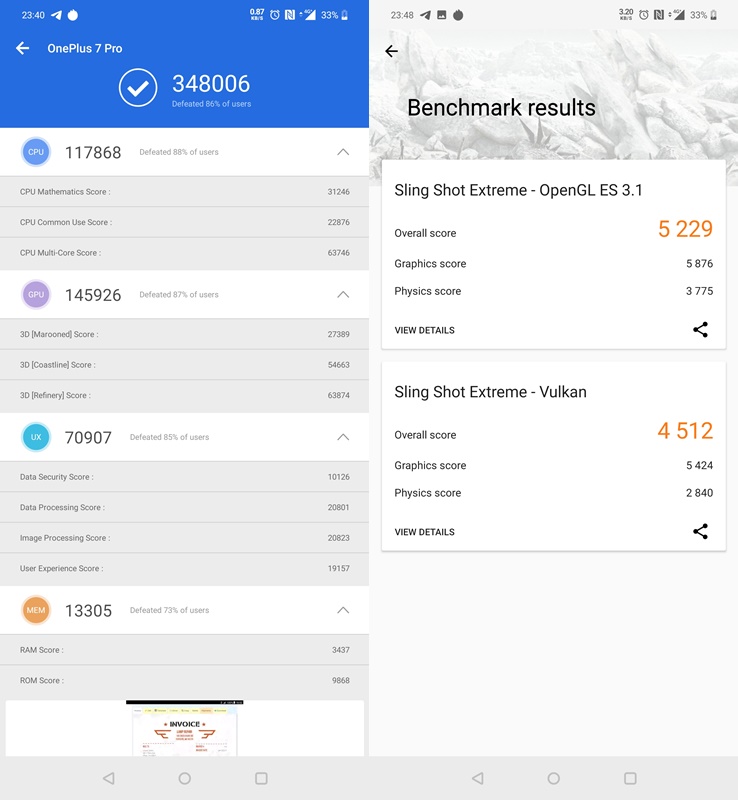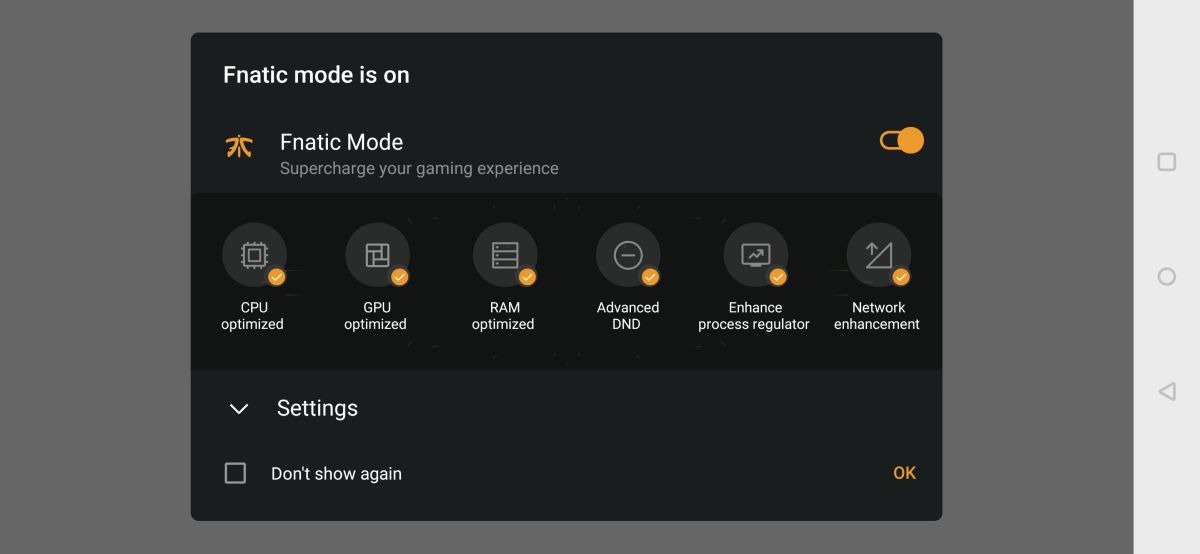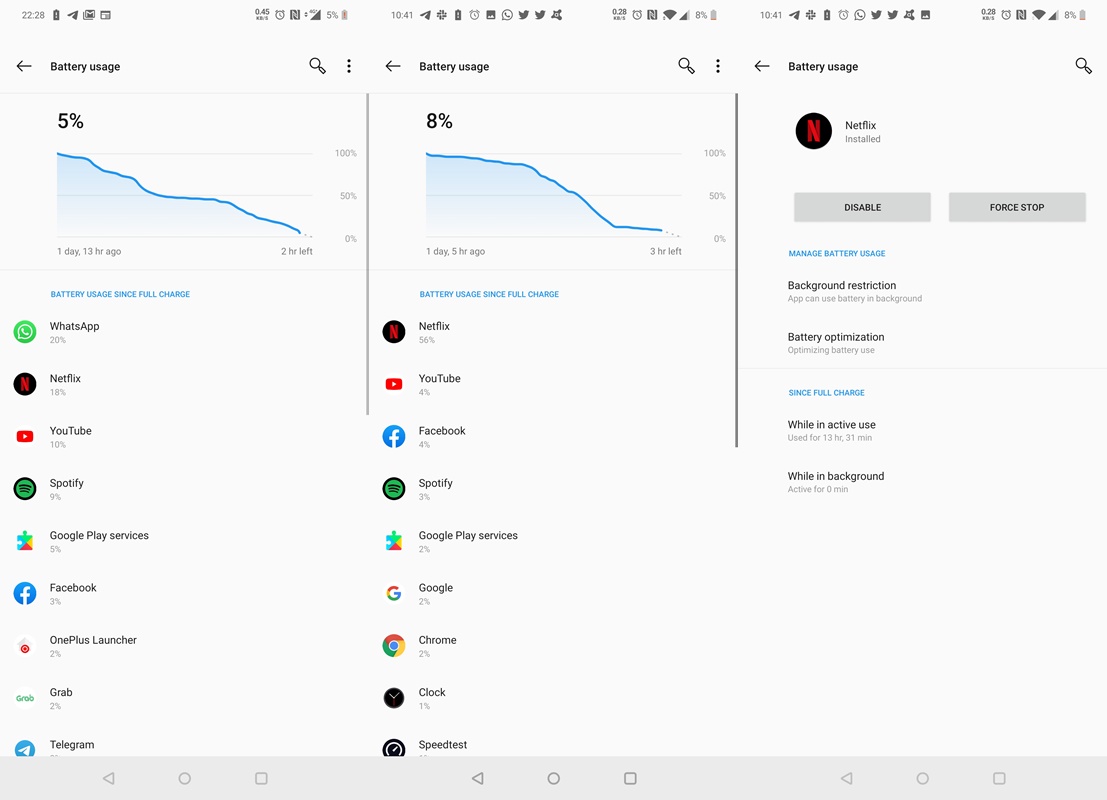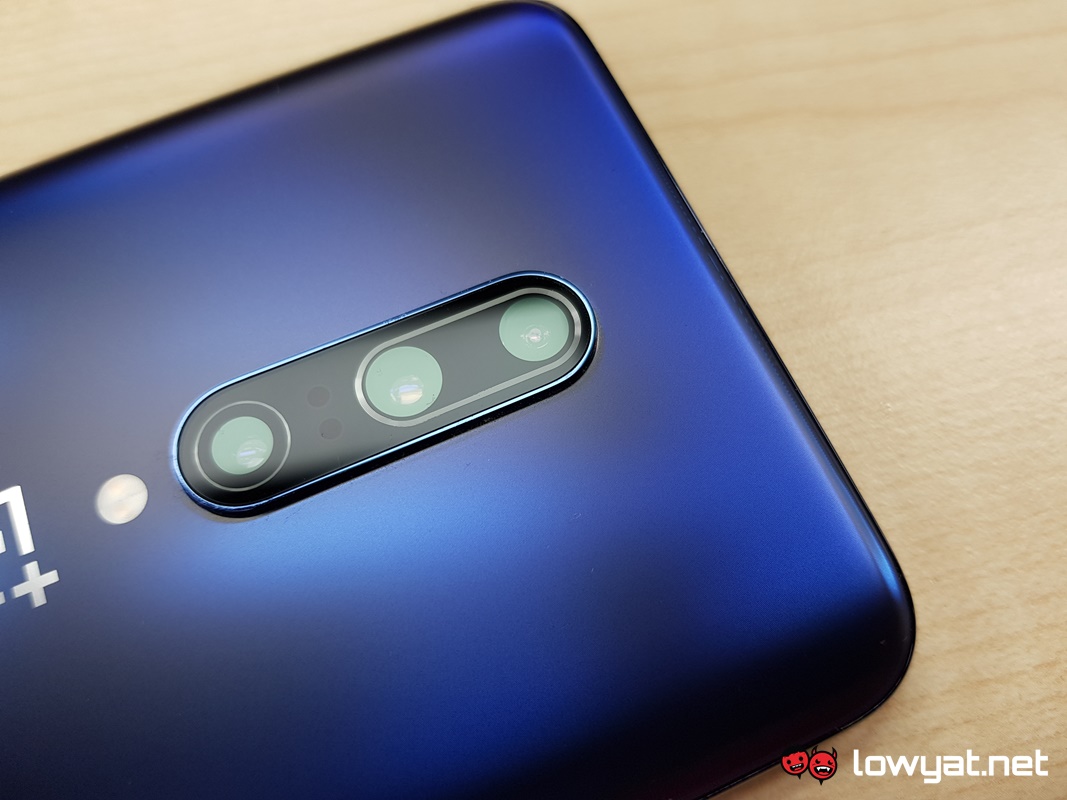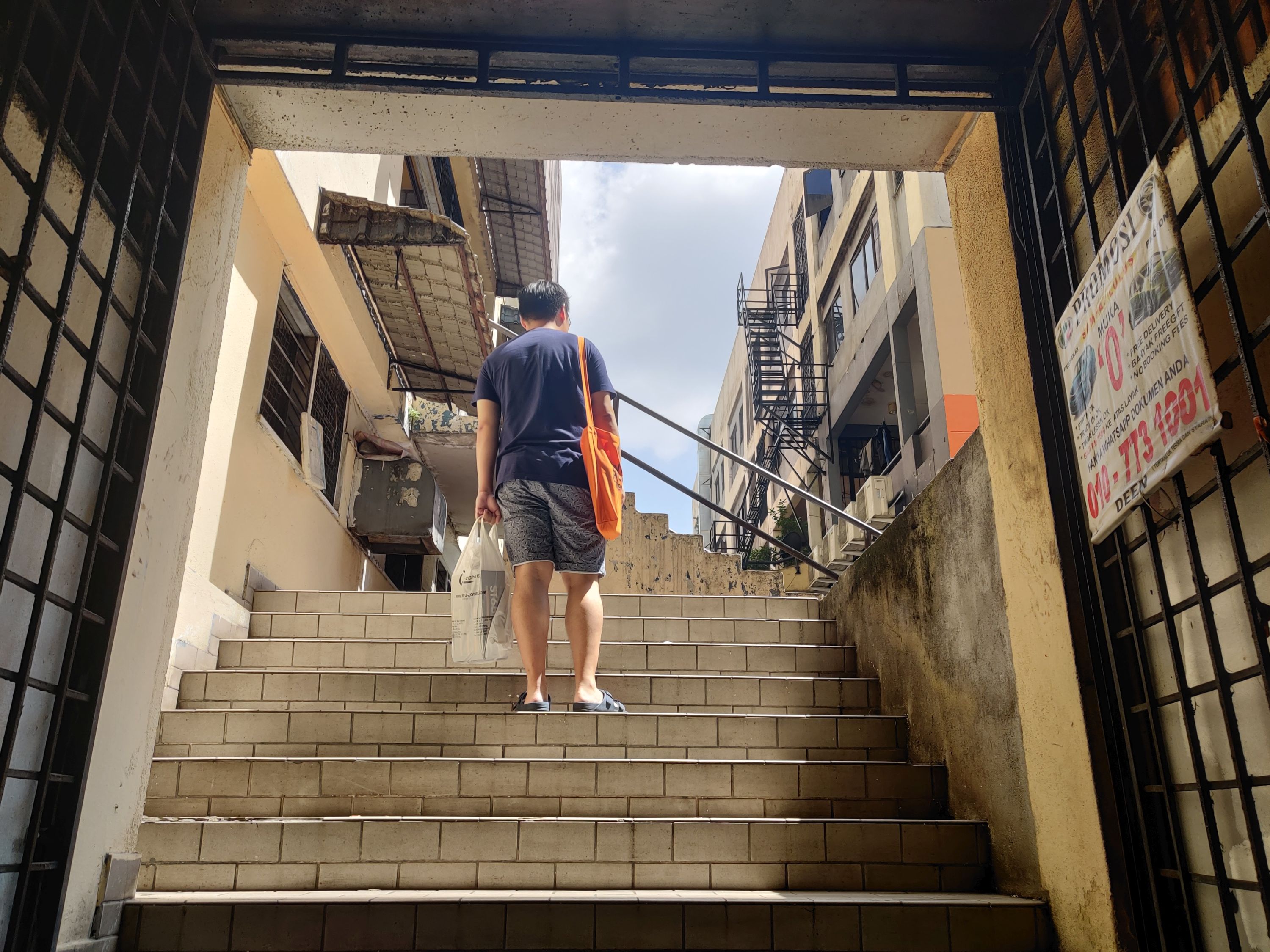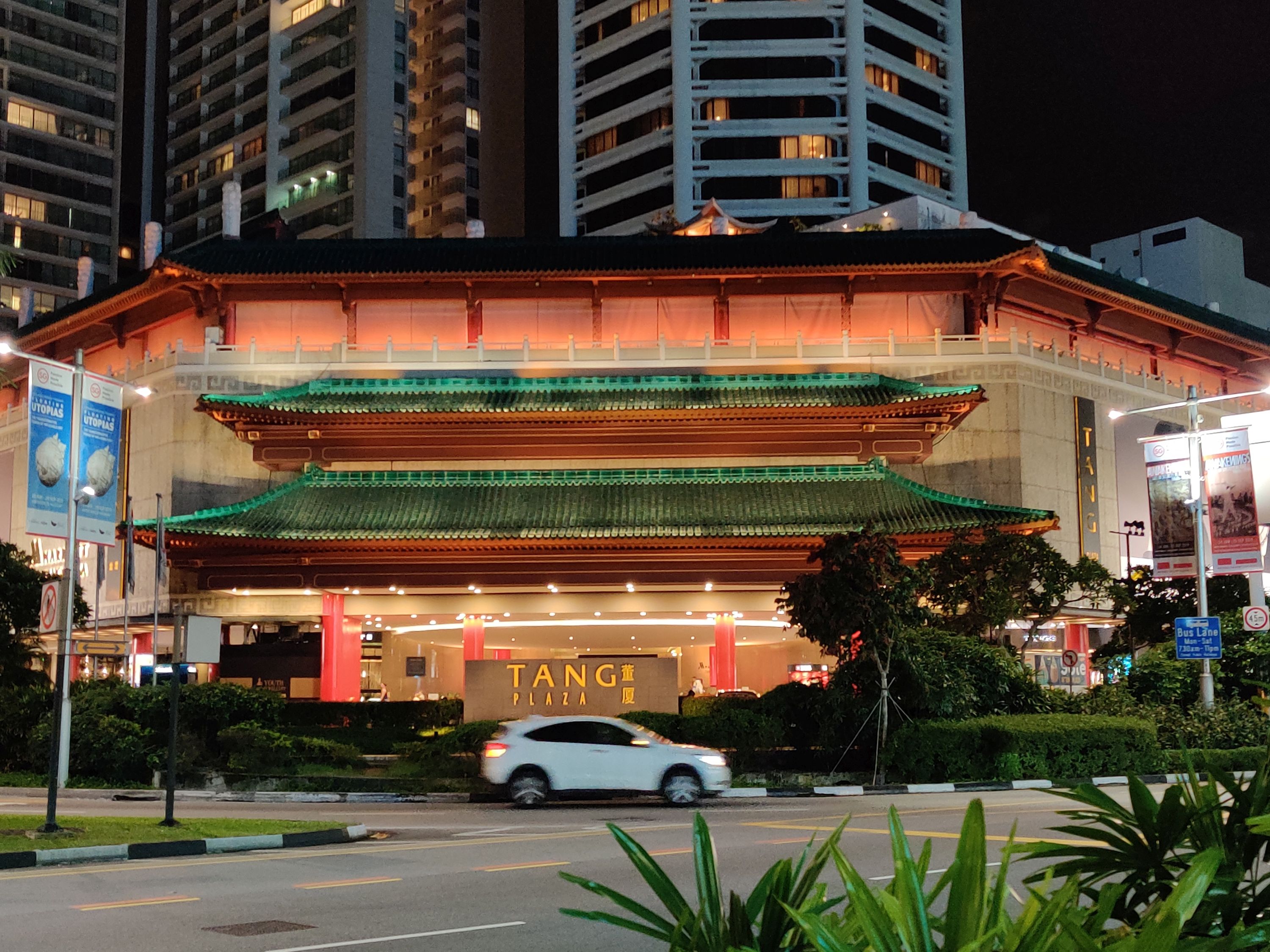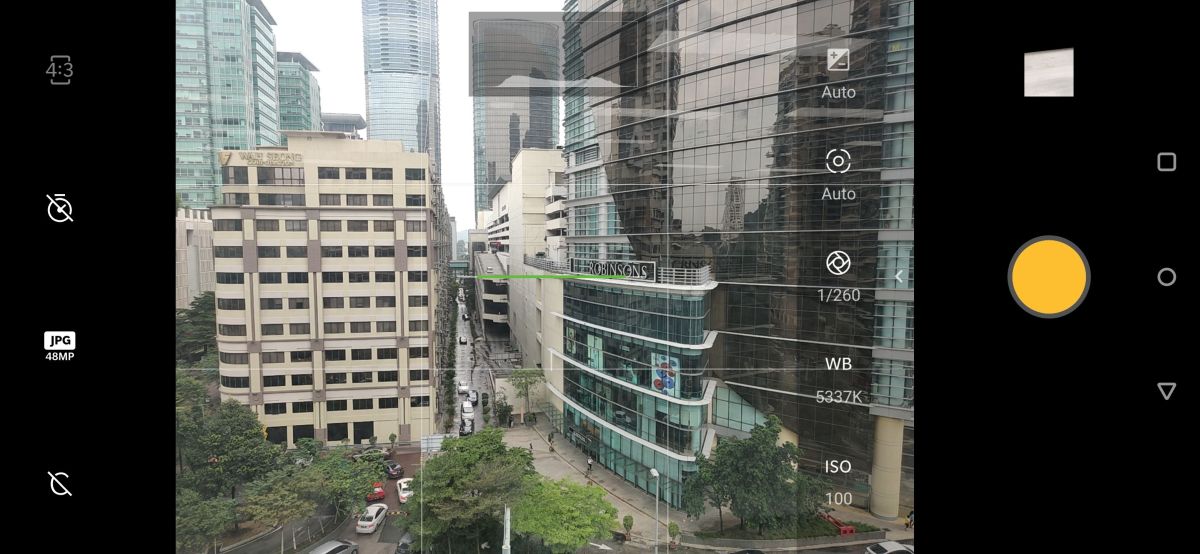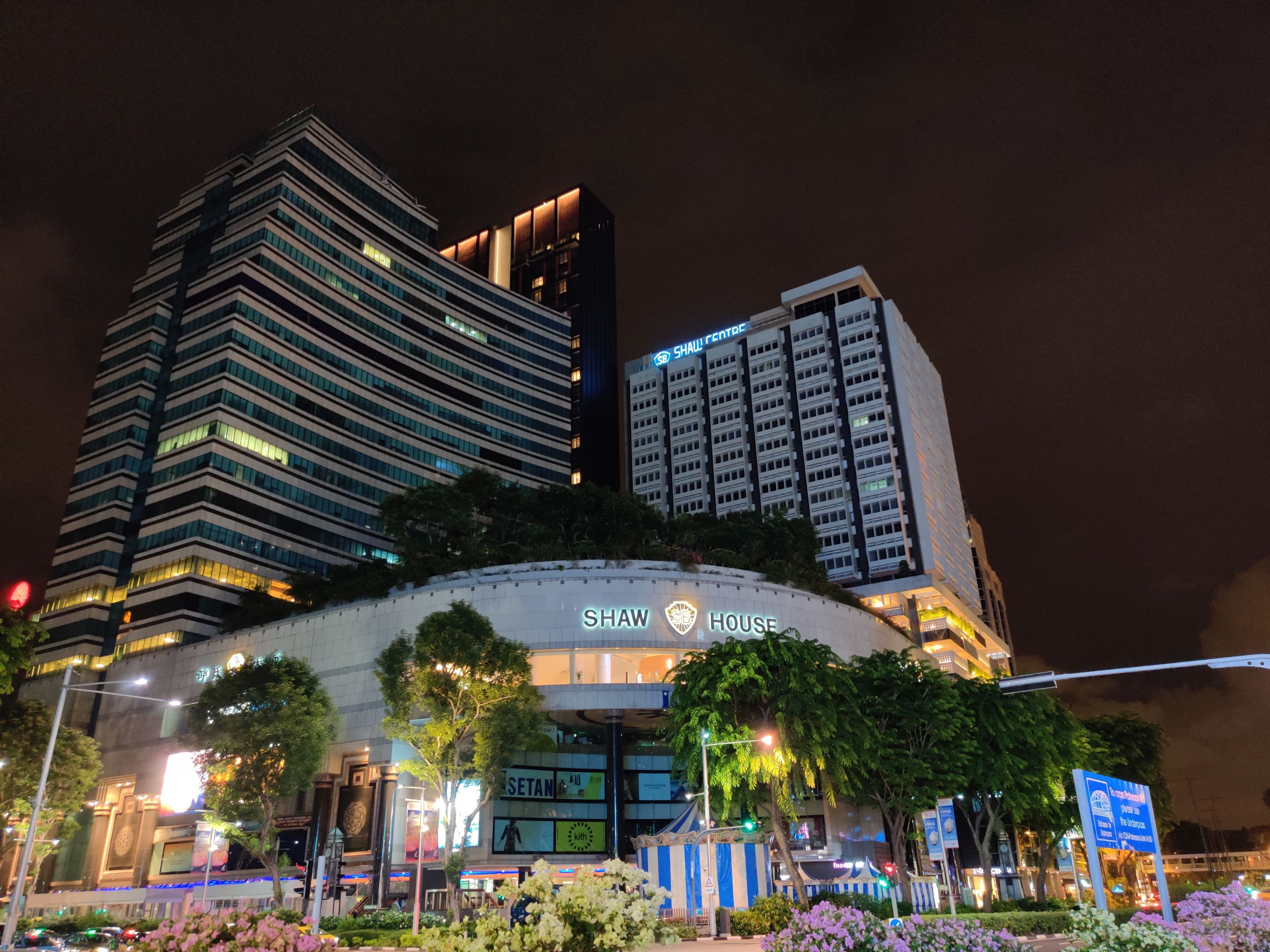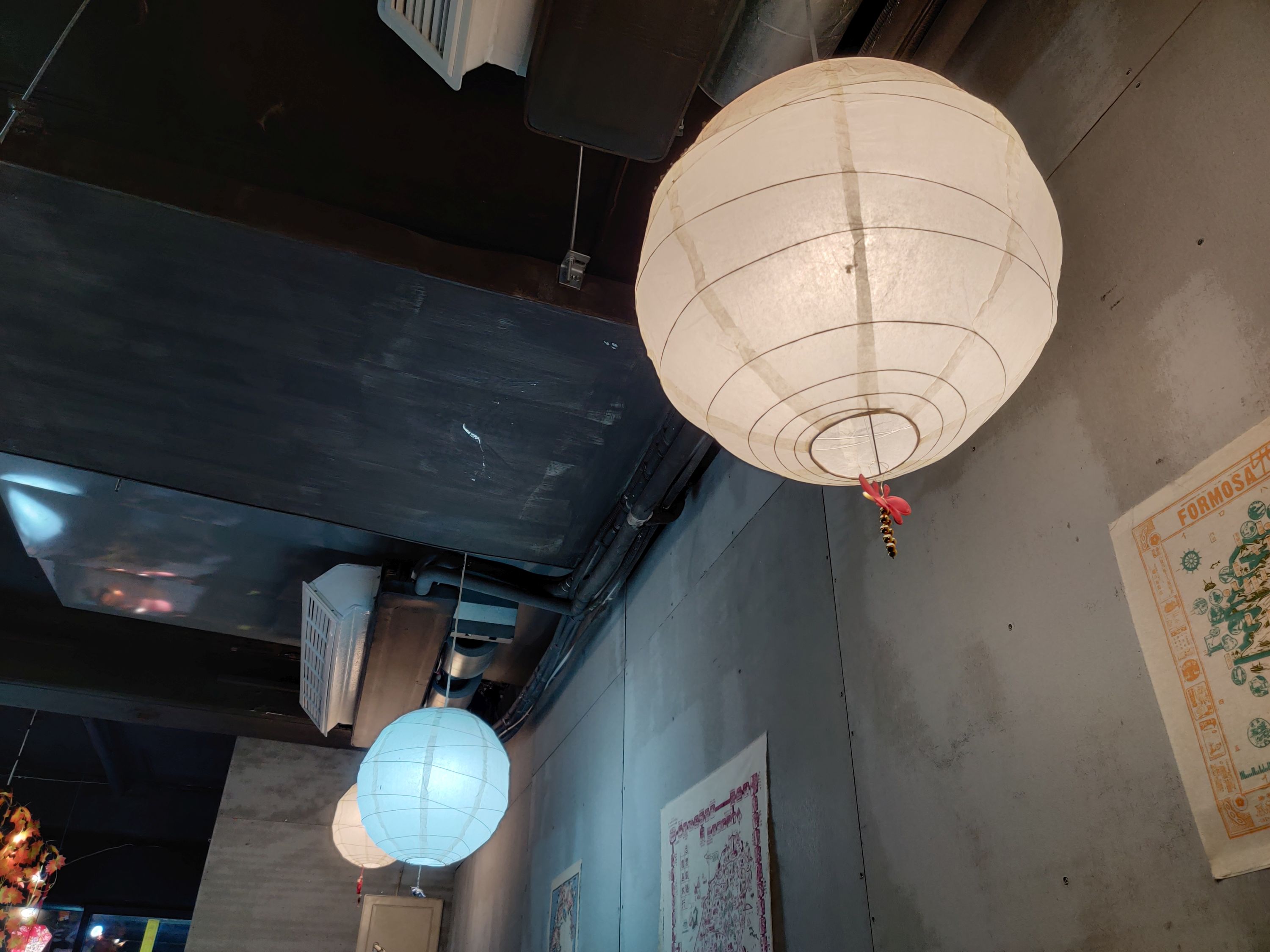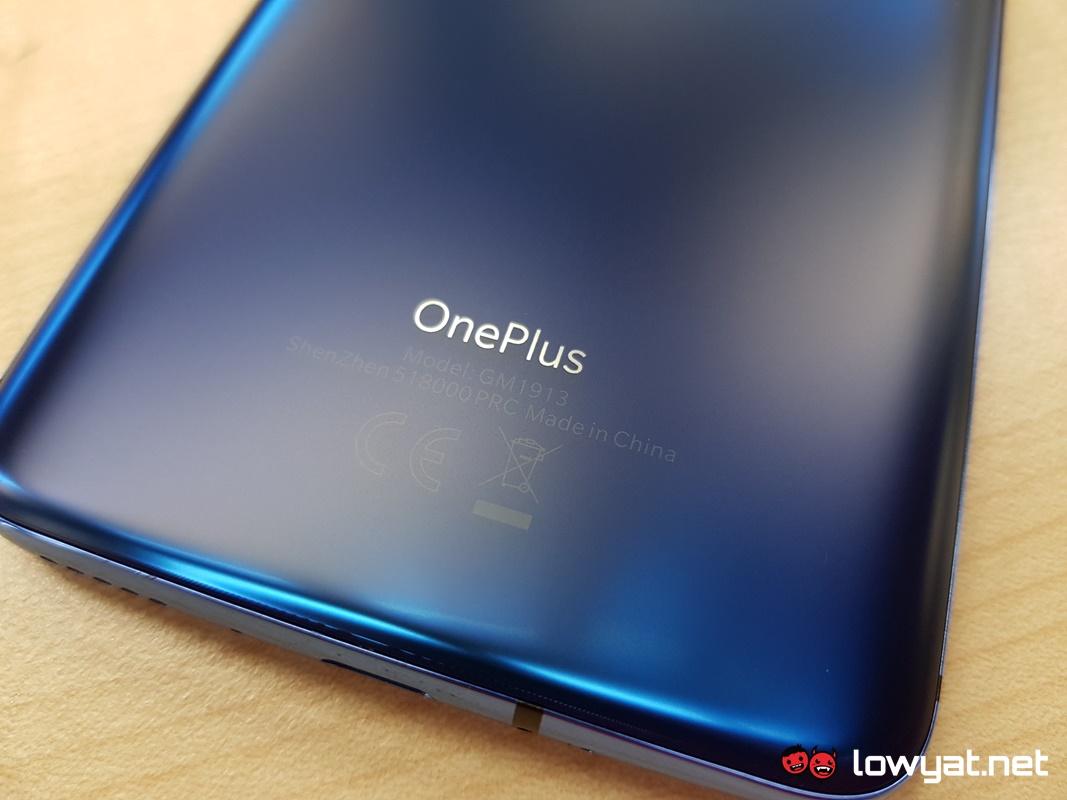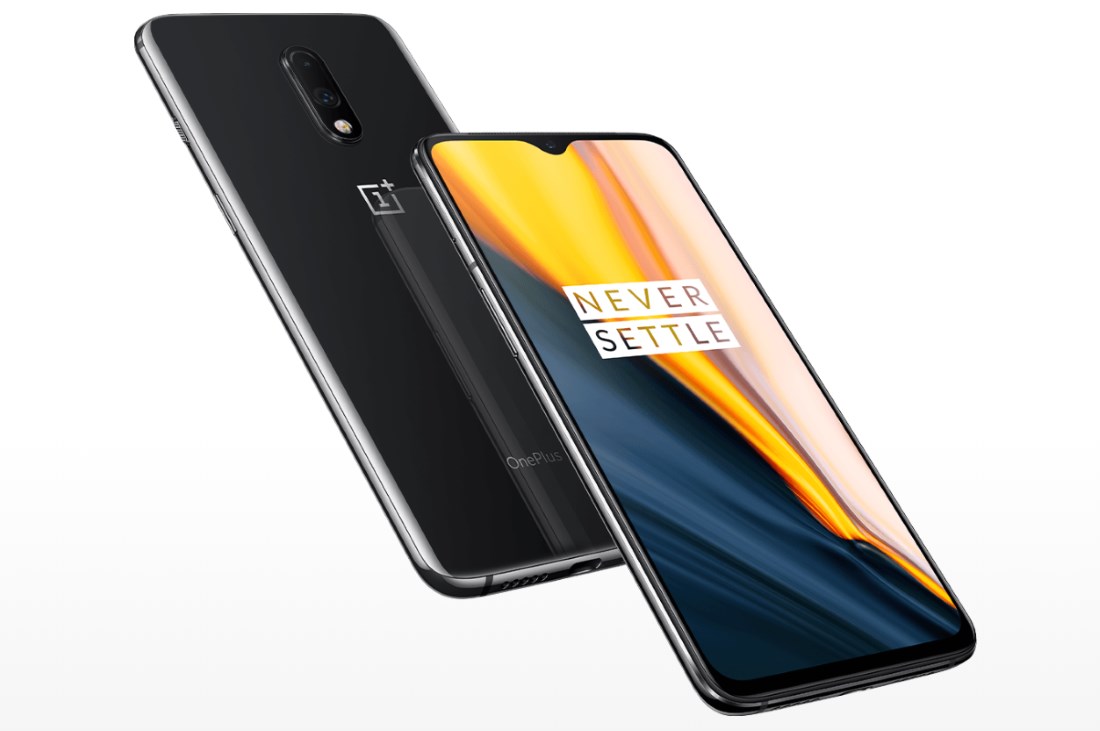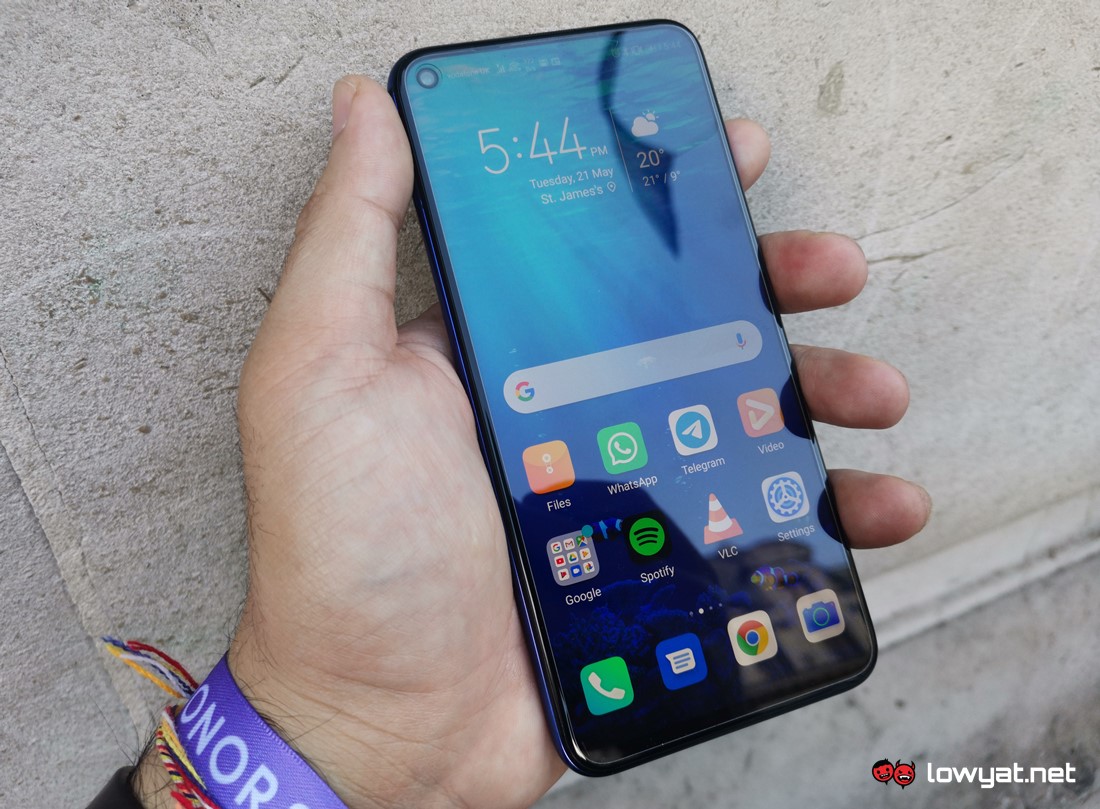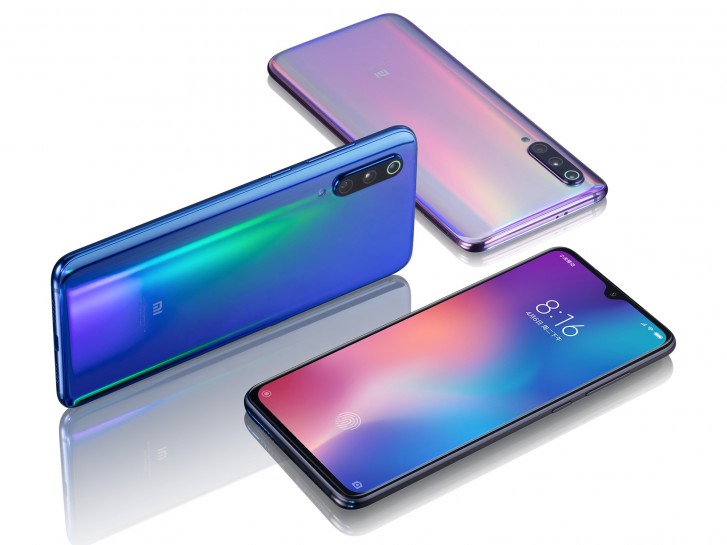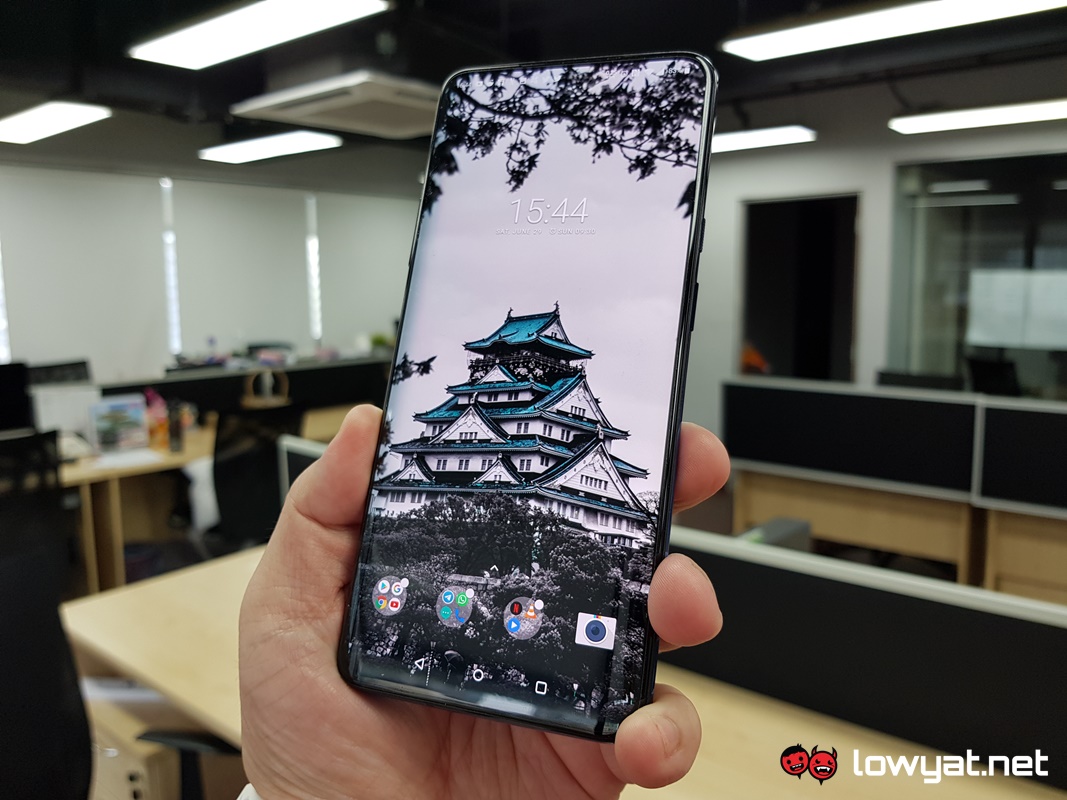It’s got the looks, the size, the camera, and the hardware to back it up. So then, the obvious question is, what’s it like to live with?
Specifications
The OnePlus 7 Pro is unsurprisingly fitted with the best hardware currently available. This includes the Qualcomm Snapdragon 855 SoC, up to 12GB RAM, and between 128GB and 256GB of non-expandable storage. In addition, OnePlus boasts consistently of the phone’s support for Dolby Atmos that it says enhances the audio experience. It also comes with a 6.67-inch AMOLED; far larger than the display sizes typically used on previous generation OnePlus smartphones. Moreover, it’s a full edge-to-edge, bezel-less display that is free from a notch. But more on that later.
Design
The first thing that will undoubtedly catch you off-guard about the OnePlus 7 Pro is the sheer size of it. In comparison to its predecessors, the phone is about the same size as Samsung’s own plus-size Galaxy Note 9 but feels slightly more cumbersome to hold in the initial stages.
I appreciate the fact that OnePlus decided to use a non-glossy back for the OnePlus 7 Pro, and not glass. This makes the phone less of a fingerprint magnet, thus making it look cleaner both to the eye and touch too.
The display returns to a “notch-free” existence.
I’m also very glad that OnePlus 7 Pro – as have most other smartphone brands – does not employ a notch or punch-hole at the front, allowing for both a truly all-display and more immersive experience. Of course, OnePlus has had to make the front-facing camera a pop-up module, which is what adds to the overall weight of the phone. Another factor that really makes the OnePlus 7 Pro’s display stands out is its refresh rate; it’s rated at 90Hz, which is clearly higher than any standard smartphone display. And while it may not sound like much to some, I can assure you that it makes a difference. Scrolling through web content feels more fluid, much smoother, and far easier on the eyes.
On another note, I happen to think the pop-up selfie is a decent compromise and alternative. Adding to the feature, OnePlus saw fit to install a gyrometer that warns the OnePlus 7 Pro when it is in freefall. Prompting it to retract the selfie camera in a split second and avoiding serious damage to the module. The in-display fingerprint sensor makes a return, and I’m glad to say that it’s fast and accurate, albeit a little too sensitive. At times, the security feature self-activates while in my pocket, prompting it to try and locking itself out after several attempts.
Moving on, OnePlus seems to have learned its lesson about the speaker placement from the OnePlus 6T. The bottom speaker grille of the OnePlus 7 Pro is now situated on the bottom right, meaning that my right palm isn’t covering it whenever I flip the phone over to landscape mode. Further, I like that the OnePlus 7 Pro uses a stereo speaker setup, and not mono.
The 3.5mm port is gone for good.
Alas, while I applaud OnePlus’ decision to implement a stereo speaker setup, the 3.5mm port is still absent. On a brighter note, it does support Dolby Atmos as well as the Qualcomm aptX audio technology. Around the back, the phone’s main triple camera setup still sticks out from the back. To be fair, OnePlus has been using the camera bump design since its inception, but after seven iterations, I do wish the company didn’t make it protrude as much.
User Experience
Let’s get this of the way; the OnePlus 7 Pro is fast. I mean, insidiously fast. The phone runs on Oxygen OS based on Android 9 Pie out of the box, and OnePlus seems to have refined the stock Android OS even further since the last year’s OnePlus 6. Every action – swiping, gestures, and opening apps – feels so responsive.
OygenOS experience is as fast and fluid as before.
Gestures make a return to the OnePlus 7 Pro, and they’re also still as handy as before. I can still bring up the camera by simply drawing the pre-assigned shape, saving me the trouble of unlocking my phone and tapping on the app to activate it.
There are some caveats for a phone as big as the OnePlus 7 Pro, and one of them is its display. Because of its “all-display” nature, there are times when tapping on certain apps or functions simply doesn’t do anything. Because a part of my palm is pressing on the display, which unintentionally makes the display think that I’m trying to perform a pinch gesture on it. Also, prior to one of OnePlus’ frequent OS updates, my OnePlus 7 Pro was a victim of the “phantom tap” issue that caused the screen to register non-existent taps at random. This issue led to certain levels of hilarity for me; on one occasion, the bug activated my Spotify playlist and stopped it. All in a span of a few seconds. As mentioned, OnePlus has already addressed the issue via one of its updates.
Software aside, the OnePlus 7 Pro and its performance are absolutely breathtaking, and that really shouldn’t come as a surprise. After all, the phone is running on the top-of-the-line Snapdragon 855 SoC and (for our model, anyway) 12GB of LPDDR4X RAM. Bear in mind, the OnePlus 7 Pro also comes with 6GB and 8GB RAM variations as well, but that doesn’t make it less of a performer. If anything, 6GB RAM is still a healthy amount, and you’d been hard-pressed to find a device that struggles with it, let alone the OnePlus 7 Pro.
Gaming on the phone is a real treat as well, and it’s made even more enjoyable with the on-board Fnatic gaming mode. Turning it on ensures that my gaming experience is always optimised and framerates are high. Although, I never really had any issue with the latter, considering that the game I typically play aren’t that resource hungry, or graphically demanding.
Exceptionally impressive battery life.
On the subject of battery life, the OnePlus 7 Pro’s longevity actually caught me off-guard. The phone has a 4000mAh battery, which is slowly becoming the new norm for many phones, regardless of the tier. When I continuously played media content on apps such as Netflix, the phone gave me a whopping 13 hours of playback. What’s more impressive is that even after that, the phone still some juice left to continue watching videos for another hour or two on another app, which in this case was YouTube.
Also adding to the “Wow” factor is the OnePlus 7 Pro’s Warp Charge 30 fast charging. In my testing, the phone went from 8% to 100% in less than 40 minutes of charging. Simply put, that is both an absurdly and blindingly fast charging rate. Using the phone as my daily driver – checking my emails, surfing the web, and the occasional video – the OnePlus 7 Pro was about to last for approximately a day and a half. Which isn’t too shabby.
Camera
Camera performance is an aspect that OnePlus seems to have hits and misses with, and the OnePlus 7 Pro seems to be no exception to that rule. Having said that, its main triple-camera module is no slouch and is very capable.
One of the better implementations of the 48MP sensor.
The OnePlus 7 Pro is not the first device to use the 48MP Sony IMX586 sensor, but it most certainly knows how to put it to use. Daytime photography with the phone’s 48MP + 16MP + 8MP camera system delivers sharp, clear pictures with an insane amount of detail. As a high-end smartphone of this calibre should.
In low-light conditions, the OnePlus 7 Pro is equally impressive; the phone performed impeccably without any shutter lag, and the end results are images that still retain detail, is adequately lit, and with the noise level kept to a minimum. The 16MP pop-up selfie camera deserves a mention here too. While the motorised module is both a clever implementation and novelty, it is nevertheless a decent performer. While I did not find myself using it as often, the ones I did came out sharp and detailed as well.
That isn’t to say that the OnePlus 7 Pro is flawless either. Unlike the competition, there is no option in the camera app’s settings that would allow you to change the image resolution.
Camera lacks the option to adjust image resolution.
The only way that I can set the resolution is by accessing the camera’s Pro Mode. Even then, the selection is limited to just three options; one of it being the choice to use the 48MP sensor, but you won’t be able to use the phone’s zoom function.
But as I said, it’s not a bad camera system, and I still enjoyed using the OnePlus 7 Pro for street photography. Primarily because of how intuitive and responsive the camera is.
Sample Images
Competition
The base model of the OnePlus 7 Pro with 6GB RAM and 128GB starts at RM2999, while the top-tier variant with 12GB RAM and 256GB has a pricetag of RM4199. The price spectrum is undoubtedly wide, and there are competitor devices that offer similar hardware, and at a more affordable range.
OnePlus 7
It really shouldn’t surprise anyone that one of the OnePlus 7 Pro’s competitors would be its non-Pro sibling. In comparison, the OnePlus 7 sports near identical hardware; a Snapdragon 855 SoC, a choice between 6GB or 8GB RAM, up to 256GB internal storage, plus the same 48MP Sony IMX586 sensor. It also only has a dual-camera module instead of three cameras, the second camera being a 5MP depth sensor, and no telephoto capabilities. Further, it still has a notch on its smaller 6.41-inch display that house a 16MP camera. Unfortunately, the OnePlus 7 isn’t officially available in Malaysia, but the good news is you can actually purchase the phone via e-commerce sites such as Lazada and Shopee.
HONOR 20
The HONOR 20 around the same time as the OnePlus 7 Pro, and it’s a device that gives the phone a run for its money. Specs-wise, the model available in Malaysia is powered by Huawei’s Kirin 980 SoC, has 6GB RAM, as 128GB of non-expandable storage. Like the OnePlus 7 Pro, it’s also sporting a triple camera setup comprising the 48MP Sony IMX586, a 16MP wide-angle sensor, and a 2MP macro lens. At the front, the phone hides a 32MP sensor inside the punch hole of its 6.26-inch Full HD+ display. However, the phone runs on Magic UI, which is essentially just Huawei’s EMUI, made specifically for HONOR. On DxOMark, the phone is on the same level with the OnePlus 7 Pro. But the main appeal of the phone is the price. Compared to the OnePlus 7 Pro, the HONOR 20 retails for RM1699.
Xiaomi Mi 9
The Xiaomi Mi 9 first came on to the scene back in February, months before the OnePlus 7 Pro. Once again, it sports nearly identical hardware with the Snapdragon 855 SoC and a penchant for the 48MP Sony IMX586 camera in its triple camera setup. The other two sensors being a 12MP telephoto lens and 16MP ultra-wide angle lens. Unlike the OnePlus 7 Pro though, the Mi 9 sports a smaller battery at 3300mAh battery. It’s also got a notch in its 6.39-inch AMOLED display, and on top of that, the phone MIUI still lacks the presence of an app drawer. That said, the phone’s retail price starts at RM1699 for the 6GB + 64GB model and RM1999 for the 6GB + 128GB variant, making it a really affordable contender to the OnePlus 7 Pro.
Conclusion
Ultimately, the OnePlus 7 Pro is by far one of the best flagship smartphones I have used and tested, to date. The phone is fitted with one the best Snapdragon chipset on the current market, has plenty of options for memory and storage, and really impressive battery life. For the record, I do wish that OnePlus had made more options available for its triple-camera system. That said, it is still one heck of an impressive camera.
A high-end smartphone that is worth every penny.
The only issue that I can see people dragging their feet around getting the OnePlus 7 Pro is the price; at a starting price of RM2999, it’s a steep asking price for a OnePlus device, especially given the brand’s reputation for providing premium smartphone at reasonable prices over the past years. However, given the performance and overall quality of the OnePlus 7 Pro, I believe the phone is worth every penny and will still recommend the device.
